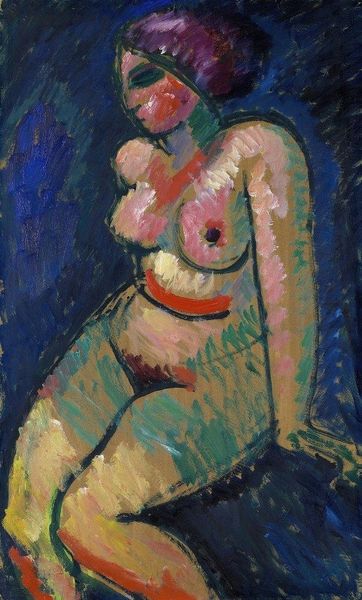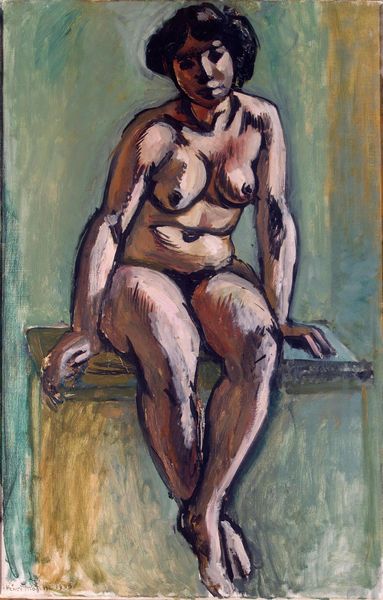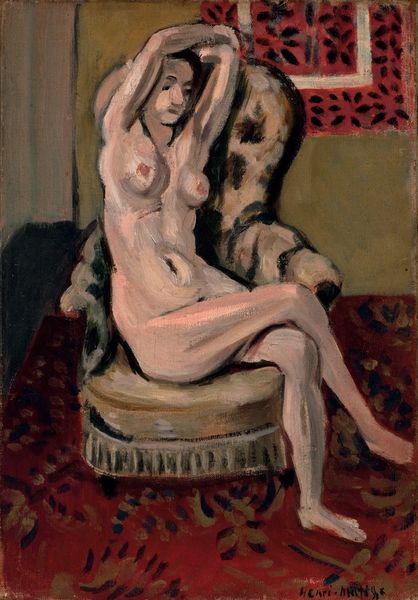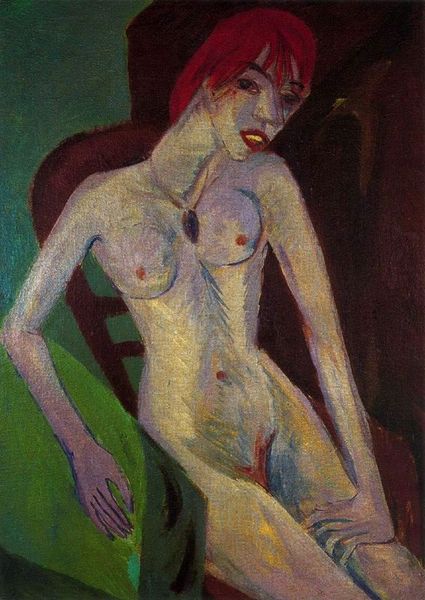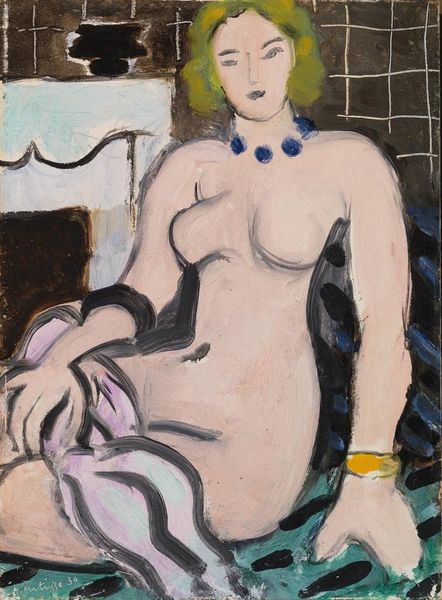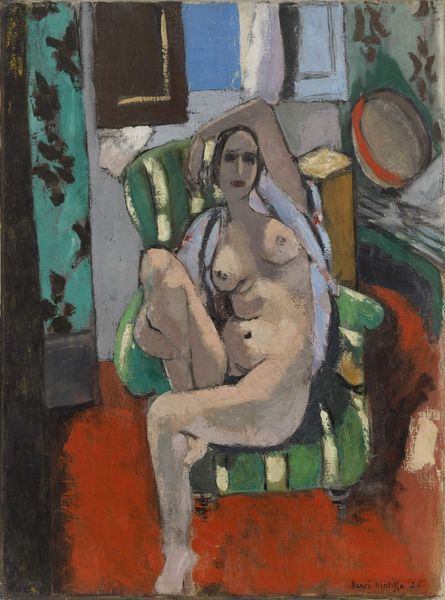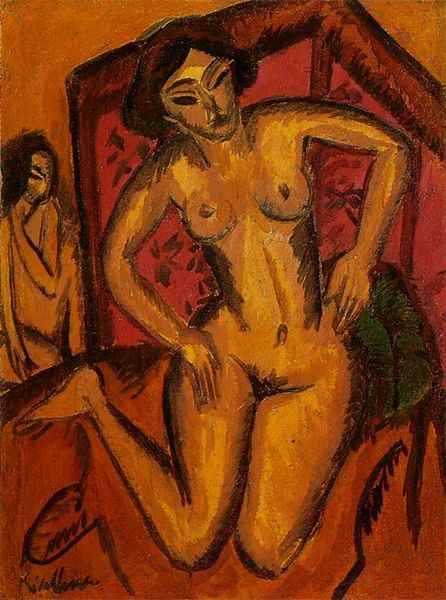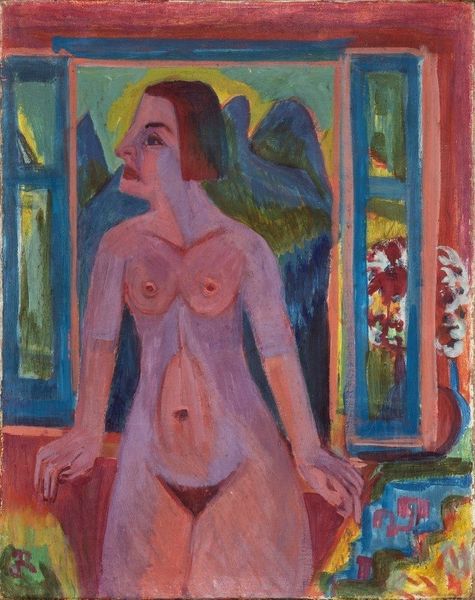
Copyright: Public Domain: Artvee
Editor: Munch’s "Nude, Sitting on the Couch," painted around 1925, presents a raw and somewhat unsettling portrayal. I’m struck by how exposed and vulnerable the subject appears, not just physically but also emotionally through her direct gaze. What social context shaped the way Munch portrayed women, especially in nudes, during this period? Curator: That’s a perceptive reading. Consider the shift in the early 20th century's perception of the nude. No longer strictly allegorical or mythological, the nude became increasingly entangled with ideas of modernity, sexuality, and the female body as a site of both desire and anxiety. Munch, working within an Expressionist framework, used the nude to explore the complex realities of human existence, pushing against the art establishment's academic standards of the time. Were paintings like this accepted into main gallery exhibits during Munch's career? Editor: I imagine showing nudes like this challenged the norms of display and taste in institutions and impacted Munch's reception. His figures feel so personal, so distant from the idealised forms typical in earlier art. Did his personal relationships impact the emotional tenor of his pieces? Curator: Absolutely. Munch's personal struggles with mental health and tumultuous romantic relationships heavily influenced his work. His nudes, particularly, reflect this raw, often uncomfortable intimacy. How do you see the role of institutions, like galleries, influencing artistic interpretation of those personal works for public audiences, compared to works painted, say, a century earlier? Editor: I think museums began playing a huge part, framing not only *what* art was shown but *how* audiences perceived it and *why* that mattered, adding historical context. Now I can appreciate "Nude, Sitting on the Couch" beyond a simple portrait—understanding how social and personal issues became visible in paint and displayed in public spaces. Curator: Precisely. Art doesn't exist in a vacuum, but emerges from—and speaks to—very specific socio-historical circumstances, shaped by cultural biases and institutional power.
Comments
No comments
Be the first to comment and join the conversation on the ultimate creative platform.

